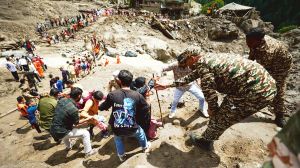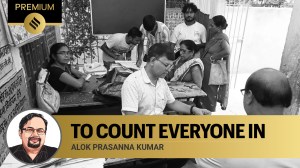Click here to join Express Pune WhatsApp channel and get a curated list of our stories
Art education on the back bench for lack of teachers, resources and awareness
According to an SCERT official, who is responsible for framing the curriculum, classes 1 and 2 are supposed to have four classes in a week, classes 3, 4 and 5 have three classes a week and classes 6, 7 and 8 have four classes.
 Regular subject teachers are assigned the responsibility for taking art classes.(Representational Image)
Regular subject teachers are assigned the responsibility for taking art classes.(Representational Image) Art lessons not only help motivate children and offer a happy break from mundane school lessons, they are also integral to a child’s creative development. However, due to lack of teachers, resources, trained staff, attention or awareness, along with non-academic workload on teachers, much is left wanting as far as art classes in government schools are concerned.
While art has been part of the curriculum as set by SCERT, no recruitment specifically for art teachers takes place for classes up to 7 in zilla parishad or municipal schools in the state. Regular subject teachers are assigned the responsibility for taking art classes.
“Six art components are part of school curriculum – drawing, singing, instrumental music, dance, drama and sculpture,” said Neha Belsare, deputy director of SCERT for Social Science, Art and Sports. “Private schools hire their own teachers, and in government schools up to class 7, it is regular subject teachers who are expected to take art classes. If these classes are actually being taken or how they are being conducted, needs to be monitored.”
ATD-qualifiedteachers are hired for classes 8 and above, she added. Holkar Nandubhau, a ZP school teacher in Baramati is one of the four teachers in his school which has four classes. Each of the four teachers takes classes of all the subjects in their respective classes. “We teach them everything–from math, languages to art and physical education,” he said.
According to an SCERT official, who is responsible for framing the curriculum, classes 1 and 2 are supposed to have four classes in a week, classes 3, 4 and 5 have three classes a week and classes 6, 7 and 8 have four classes. “While we subject teachers take art classes at primary levels, not all of us have the aptitude for it,” said a municipal school teacher in Pune. “With much data-related non-academic work that we have to do, there is often some pending course work. So we often end up using art classes to cover the syllabus of regular subjects.”
“Art is not about telling kids how to draw a parrot, and then asking them to draw it the same way, but about stimulating their ability to express and imagine,” said Prachi Sathe, managing trustee of Art India Foundation, which works closely in the field of art education for children in Pune.
“This may not happen if a teacher untrained in art-education is given charge of art classes. Children, especially autistic and dyslexic, from socially marginalised backgrounds who may be struggling with language, can do wonders through art.”
Belsare said that with the current state curriculum framework, more attention will be paid in this regard as NEP places much importance on art and related fields, especially in the early childhood education segment.
Click here to join Express Pune WhatsApp channel and get a curated list of our stories







